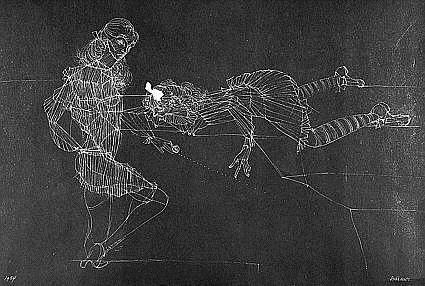Unica Zürn's Love, Madness, and Art with Hans Bellmer
Unica Zürn, a German artist and author from the 20th century, is often overlooked in the European avant-garde community. Her life, marked by emotional tumult, provocative creativity, and haunting insights into eroticism and rebellion, paints a vivid picture of her psyche.

Unica Zürn (1916-1970), the German author and artist, rests in the shadows of the European avant-garde, her works and life teeming with tumultuous emotion, provocative creativity, and haunting glimpses into the realms of eroticism and transgression. Raised in Grünewald, Berlin, Zürn’s childhood was a tableau of overt adult liaisons and familial discord. Her contributions, notably in “Grim Spring” and “The Jasmine Man,” serve as autobiographical narratives depicting her harrowing experiences and complex relationships, painting her as a compelling, albeit, unjustly overlooked figure in avant-garde literature.
In the big house of her childhood, the absence of her adored father was conspicuous, leaving room for her mother’s lovers to traverse the household with unmasked indiscretions. Zürn witnessed the intertwining of bodies and desires, her young mind molding the scenes into images of monstrous spiders, symbols of the tormenting eroticism that dwelt in her house. The haunting image of “a mountain of warm flesh” became a symbol of her mother's unabated desires, Zürn running from this figure, desperate for an escape from the relentless throes of human wants.




